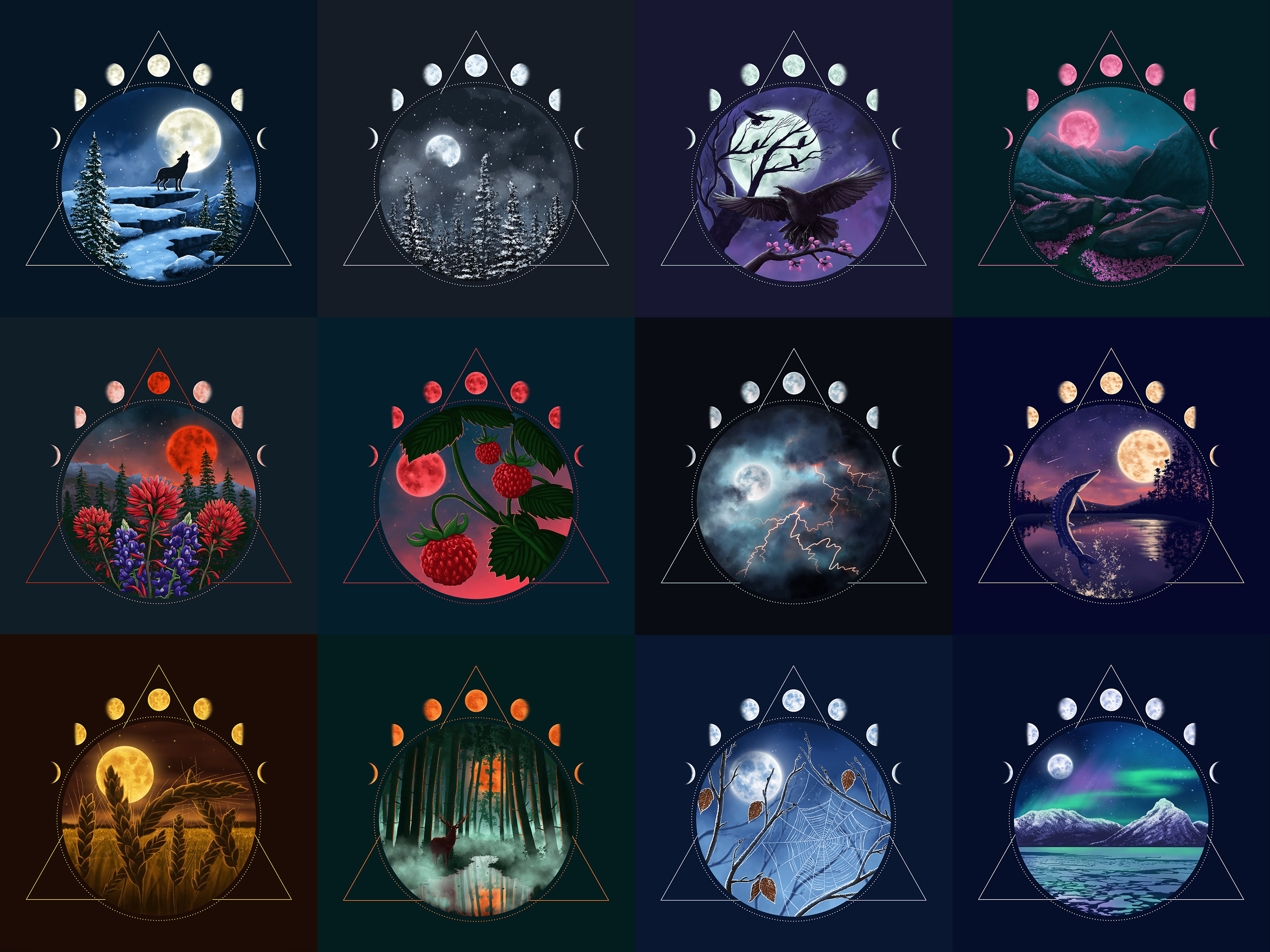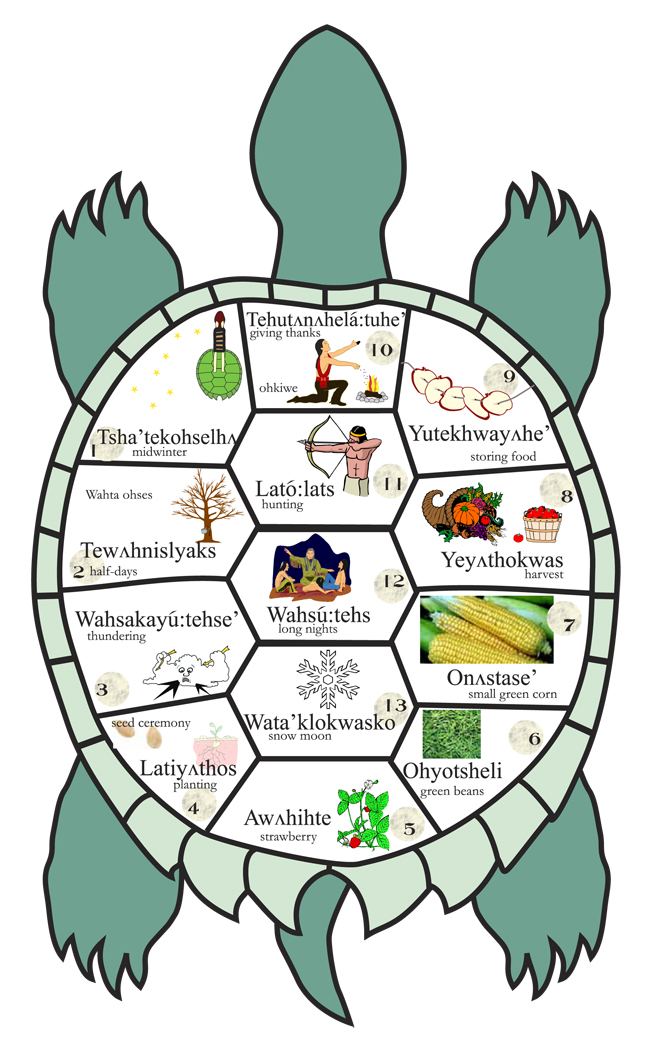Past The Gregorian: Understanding The Native American 13 Moon Calendar
Past the Gregorian: Understanding the Native American 13 Moon Calendar
Associated Articles: Past the Gregorian: Understanding the Native American 13 Moon Calendar
Introduction
With enthusiasm, let’s navigate by the intriguing subject associated to Past the Gregorian: Understanding the Native American 13 Moon Calendar. Let’s weave attention-grabbing info and supply contemporary views to the readers.
Desk of Content material
Past the Gregorian: Understanding the Native American 13 Moon Calendar

The Gregorian calendar, with its arbitrary leap years and uneven months, is the dominant timekeeping system globally. But, lengthy earlier than its inception, Indigenous cultures throughout the Americas developed intricate and deeply related calendrical programs reflecting their intimate relationship with the pure world. Amongst these, the 13 Moon calendar, although not universally utilized by all Native American nations, represents a big instance of a cyclical, lunar-based system that provides a strong different perspective on time and its passage. This text will delve into the ideas of the 13 Moon calendar, exploring its construction, significance, and modern relevance.
The Lunar Basis: A Cycle of 13 Moons
Not like the Gregorian calendar’s photo voltaic focus, the 13 Moon calendar is basically lunar. It is based mostly on the commentary of the moon’s roughly 28-day cycle, leading to a 12 months composed of 13 lunar months, every containing 28 days. This totals 364 days, leaving sooner or later (or generally two, relying on the particular custom) exterior the 13-month cycle, also known as a "Day Out of Time." This "Day Out of Time" will not be a day of relaxation or inactivity, however fairly a day of celebration, reflection, and a time for releasing the outdated and embracing the brand new, appearing as a bridge between one 12 months and the subsequent.
The simplicity and precision of this technique are putting. The 28-day month is definitely divisible into 4 weeks of seven days, sustaining a connection to the normal seven-day week whereas avoiding the uneven lengths of Gregorian months. This constant construction creates a extra harmonious rhythm, aligning extra intently with the pure cycles of the moon and the human physique.
Past the Moon: Synchronicity with Nature
The 13 Moon calendar will not be merely a lunar depend; it is deeply intertwined with the commentary of nature. Many Indigenous cultures used the moon cycles to trace planting and harvesting seasons, animal migrations, and different pure phenomena. The calendar’s construction facilitated a profound understanding of ecological rhythms and fostered a respectful relationship with the atmosphere. The phases of the moon, from new moon to full moon and again once more, grew to become symbolic markers of development, decay, and renewal, mirroring the cyclical nature of life itself.
This connection prolonged past agriculture. Many ceremonies and rituals have been aligned with particular lunar phases, reflecting the assumption that the moon’s vitality influenced varied features of life, from human feelings to the success of searching and gathering. The 13 Moon calendar, due to this fact, served as a non secular information, serving to people and communities to stay in concord with the pure world’s cyclical patterns.
The Significance of the "Day Out of Time"
The "Day Out of Time," the day exterior the 13-month cycle, holds immense symbolic significance. It is a day devoted to celebrating the completion of a cycle and getting ready for the subsequent. It is a time for reflection on the previous 12 months, acknowledging each achievements and challenges. Many traditions contain ceremonies, rituals, and celebrations on this present day, specializing in releasing unfavourable energies and setting intentions for the approaching 12 months.
Today additionally serves as a reminder of the interconnectedness of all issues. It is a time to understand the holistic nature of existence and acknowledge the cyclical nature of life, loss of life, and rebirth. The "Day Out of Time" acts as a strong reset, permitting people and communities to method the brand new 12 months with renewed objective and intention.
Variations and Interpretations:
It is essential to emphasise that there is no single, universally accepted "Native American 13 Moon calendar." Completely different Indigenous nations throughout the Americas developed their very own distinctive calendrical programs, typically incorporating components of each lunar and photo voltaic cycles. Whereas the 13 Moon calendar shares frequent themes, such because the lunar focus and the significance of pure cycles, its particular implementation different considerably throughout completely different cultures.
Some students argue that the trendy 13 Moon calendar, typically related to the work of José Arguelles and his "Regulation of Time," represents a synthesized interpretation fairly than a direct reflection of a selected Indigenous custom. Whereas Arguelles drew inspiration from Indigenous information, his work additionally incorporates components of his personal non secular philosophy. It is important to method such interpretations with sensitivity and respect, acknowledging the complexities and variety of Indigenous calendrical programs.
Up to date Relevance and Purposes:
Regardless of its historic roots, the 13 Moon calendar holds vital modern relevance. In a world more and more disconnected from pure rhythms, this calendar gives a framework for reconnecting with the cyclical nature of life and fostering a extra sustainable relationship with the atmosphere. Its emphasis on concord, steadiness, and intentionality gives a strong counterpoint to the linear, typically irritating, tempo of contemporary life.
The calendar’s construction can be utilized to boost private well-being, selling mindfulness and self-awareness. Monitoring the moon cycles will help people synchronize their actions with pure rhythms, resulting in elevated vitality and productiveness. The emphasis on intention-setting on the "Day Out of Time" gives a chance for private development and transformation.
Moreover, the 13 Moon calendar serves as a strong device for selling intercultural understanding and respect for Indigenous information. By learning and appreciating these different programs of timekeeping, we are able to broaden our views and develop a deeper appreciation for the knowledge and resilience of Indigenous cultures.
Conclusion: A Journey Past Time
The Native American 13 Moon calendar, in its numerous kinds, represents greater than only a technique of monitoring time. It is a reflection of a profound understanding of the pure world and a philosophy of life deeply intertwined with cyclical rhythms. Its simplicity, precision, and connection to nature supply a strong different to the Gregorian calendar, offering a framework for dwelling in better concord with ourselves and the planet. By exploring and appreciating these different calendrical programs, we are able to acquire beneficial insights into the knowledge of Indigenous cultures and foster a extra sustainable and significant relationship with the world round us. The 13 Moon calendar invitations us not simply to measure time, however to expertise it – to stay inside its rhythms, to study from its cycles, and to search out our place inside the grand, steady move of existence.








Closure
Thus, we hope this text has offered beneficial insights into Past the Gregorian: Understanding the Native American 13 Moon Calendar. We thanks for taking the time to learn this text. See you in our subsequent article!